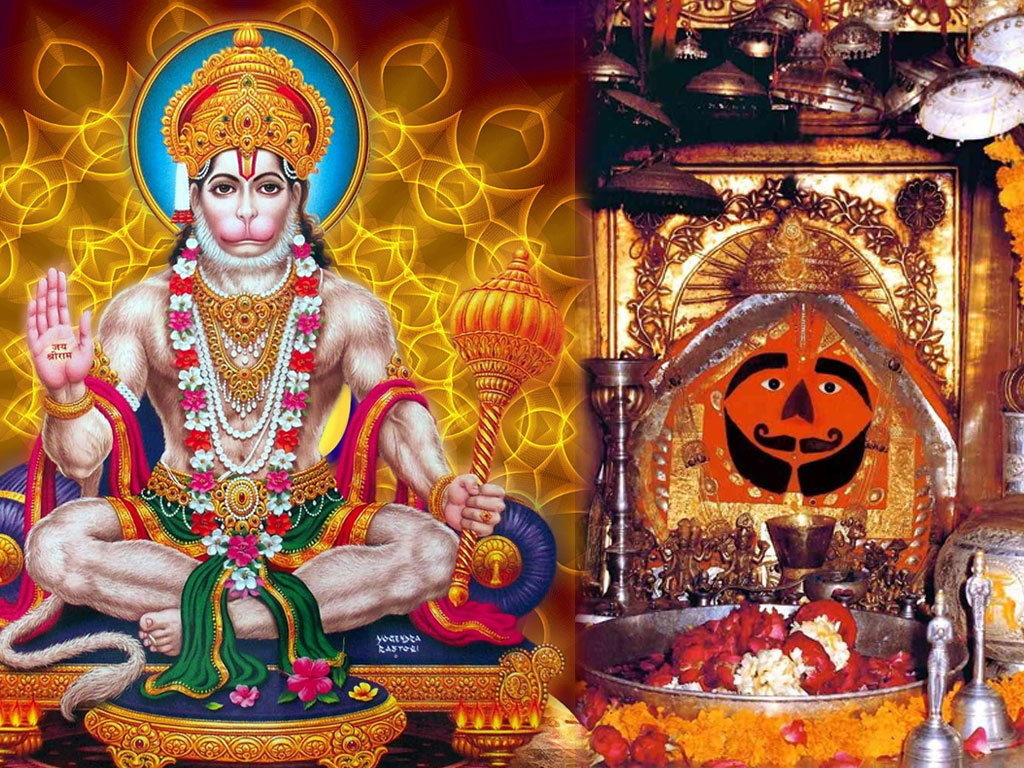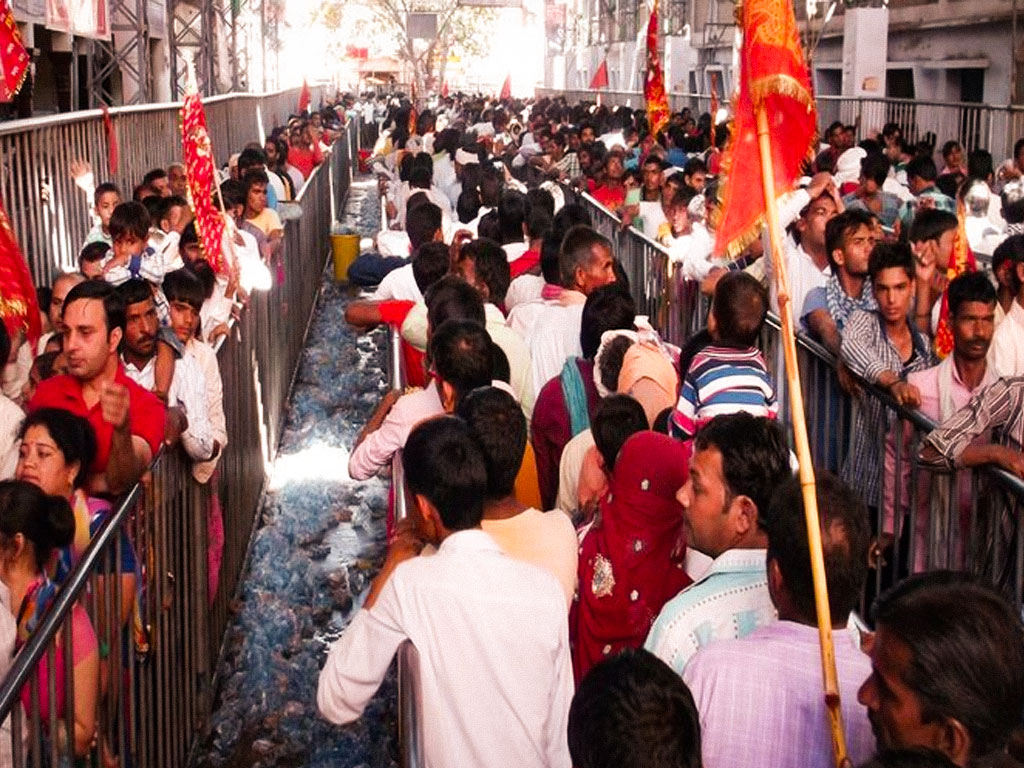India is the land of temples. Literally! No country in the world can boast of 2 million temples, and that was the 2001 census. In the past years a few thousands have been added to the list. But some temples are more famous in India than others and devotees throng those temples throughout the year. The Salasar Balaji Temple, located in Churu district in Rajasthan, is one of them.
Established way back in 1754 AD the temple is steeped in history, traditions and beliefs. Located at a distance of 180 kms from Jaipur and 300 kms from Delhi, people usually travel by road to reach the mandir.
Click Here to know how to reach the Salasar Balaji Temple.
The temple is usually open from 4 am to 10 pm everyday but more devotees throng the temple during Chaitra Purnima or Hanuman Jayanti and Ashvin Purnima. The fairs held around the temple at this time, have a footfall of 6-7 lakhs.
Why Is The Salasar Balaji Temple In Rajasthan So Revered?
The Salasar Balaji Temple is unique in many ways. It is believed that if one prays with honesty at the temple wishes get fulfilled and even the sick get better. That is why it is called the Shakti Sthal (shrine). There are many reasons why the Salasar Balaji Temple is so revered.
1. It is a self-created temple
Yes, you can say it was Hanumanji, who created this temple himself. He wanted to be worshipped in this particular place and he ensured that a few people understood what he wanted.

The story that every devotee, who visits the temple, hears involves a Jat farmer Asota, Thakurji and Mohandas Maharaj of Salasar. The story begins when Asota the farmer hit something hard while ploughing the field. He discovered it was a mud and sand covered statute of Balaji or Hanumanji.
After his wife cleaned it he told the Thakur of the village about his discovery. That very night Balaji came to Thakur’s dream and told him to establish a temple with the statue at Salasar.
On the same night Mohandas Maharaj, a devotee of Hanumanji, saw the Lord in his dream giving him the same instructions.
When Mohandas sent word to Thakur about his dream and his intention to establish the temple, he was astonished to hear that Thakur had a very similar dream.
So it was Hanumanji’s wish that the temple should be established in Salasar. That is why the temple is called swayambhu (self-created).
2. The statue of Balaji is unique
The Salasar Balaji Mandir or the Salasar Dham, as it is also called, has a statue of Hanumanji that is not found in any other part of India.
It is the only temple where Balaji has a beard and moustache and has a round face. Only his bust is there, not the full body.
There is a more recently constructed Hanuman idol, which is almost 80 feet tall, opposite the temple.
3. From a mud hut to a gold-embossed temple
When Mohandas Maharaj built the temple it was made of mud and stone. He then took the help of two Muslim experts, Noora and Dau, to build the temple quickly.
Later on brick, lime, cement, marble and mortar were used to build a more permanent structure over two years. Family members of Mohandas, influential people of the area and their successors, went on adding to the temple that gradually took the shape of the present temple complex.
The entrance to the main chamber is carved in gold and the inside walls, where the idol of Balaji was consecrated, are made of silver with pictures of Lord Ram and Hanumanji engraved in it.
The temple now runs charitable hospitals, helps in providing water supply and has dharmashalas where devotees can stay.
4. The sacred rituals
Devotees come from far and wide to the Salasar Balaji Temple to tie coconuts on a tree with a sacred thread and it is said that their wish is granted. Many children are brought there for their Mundan or Jadula ceremony.

The sacred fire which burns all the time was apparently lit by Mohandas Maharaj himself after he decided on his own Samadhi (self-burial). People believe that having the ashes from this eternal fire could cure diseases.
Another ritual that is followed here is Savamani (“sava” meaning 1 and quarter in Hindi and “mun” meaning 40 kgs) where food weighing 50 kgs is offered to the deity. Rajasthani delicacies like dal, bati, churma and laddu are prepared and once the prayers are done, the food is given to family members or distributed among the needy.
The best part about the Salasar Balaji mandir is its maintenance. Despite being three centuries old, it is perfectly maintained by the Hanuman Seva Samiti and the temple premises are always spic and span. Hundreds of devotees reach the temple after walking for miles – to show their reverence to Lord Balaji of Salasar.

Leave a Reply